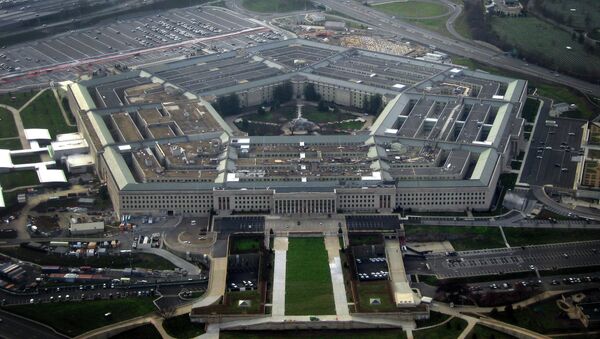The tentative testing comes as North Korea and its leader Kim Jong-un continue ballistic missile launches and nuclear weapons testing.
"Although North Korea is not an existential threat," the isolated country is "the most dangerous and unpredictable actor in the Pacific region," according to comments from Air Force Gen. John Hyten, head of the US Strategic Command (StratCom), to a Senate panel this week.
The defense system is managed by Boeing, with interceptors in California at Vandenberg Air Force Base and in Alaska at Fort Greely. According to Missile Defense Agency, the Pentagon’s test will include an avionics update to an Orbital ATK Inc.-made booster rocket containing a conventional warhead.
Hyten told lawmakers, "Pyongyang’s evolving ballistic missile and nuclear weapons program underscore the growing threat" as they are "also pursuing development of Intercontinental Ballistic Missile (ICBM) and Submarine Launched Ballistic Missiles capabilities, and an improved Intermediate Range Ballistic Missile," according to Bloomberg.
Amid ongoing threats from the DPRK (Democratic People’s Republic of Korea), responding to joint military drills between the US and South Korea, US President Donald Trump has accused the country of behaving "very very badly," and the issue will likely be a central piece of discussion in his meeting with Chinese President Xi Jinping Thursday and Friday.
Trump has accused China of not taking an active enough role in addressing provocation from the North, while Beijing maintains it has enforced sanctions against Pyongyang leveled by the United Nations.
In a recent interview with the Financial Times, Trump warned, "If China is not going to solve North Korea, we will. That is all I am telling you."
China has its own issues with the presence of the US’ Terminal High Altitude Area Defense (THAAD) system in South Korea, believing the system’s radar could be used to spy on Beijing.
Seoul’s military claimed this week that Pyongyang fired a missile more than 30 miles in the direction of the Sea of Japan, in continued defiance of UN sanctions and international calls for denuclearization. There are also reports that Pyongyang is trying to develop a missile topped with a nuclear warhead.
During his testimony, Hyten pointed out that a similar missile North Korea tested in February utilized a new solid fuel and was fired from a mobile launcher, and that this is concerning because solid fuel projectiles are more difficult to track. "They moved what was demonstrated at sea onto land, onto a new launcher and did it in a very quick way," he said.
Early estimations indicated the launch may have been the medium-range missile KN-15, also called the Pukguksong-2. South Korean officials have expressed that this latest test was deliberately timed to Xi and Trump’s upcoming meeting.




